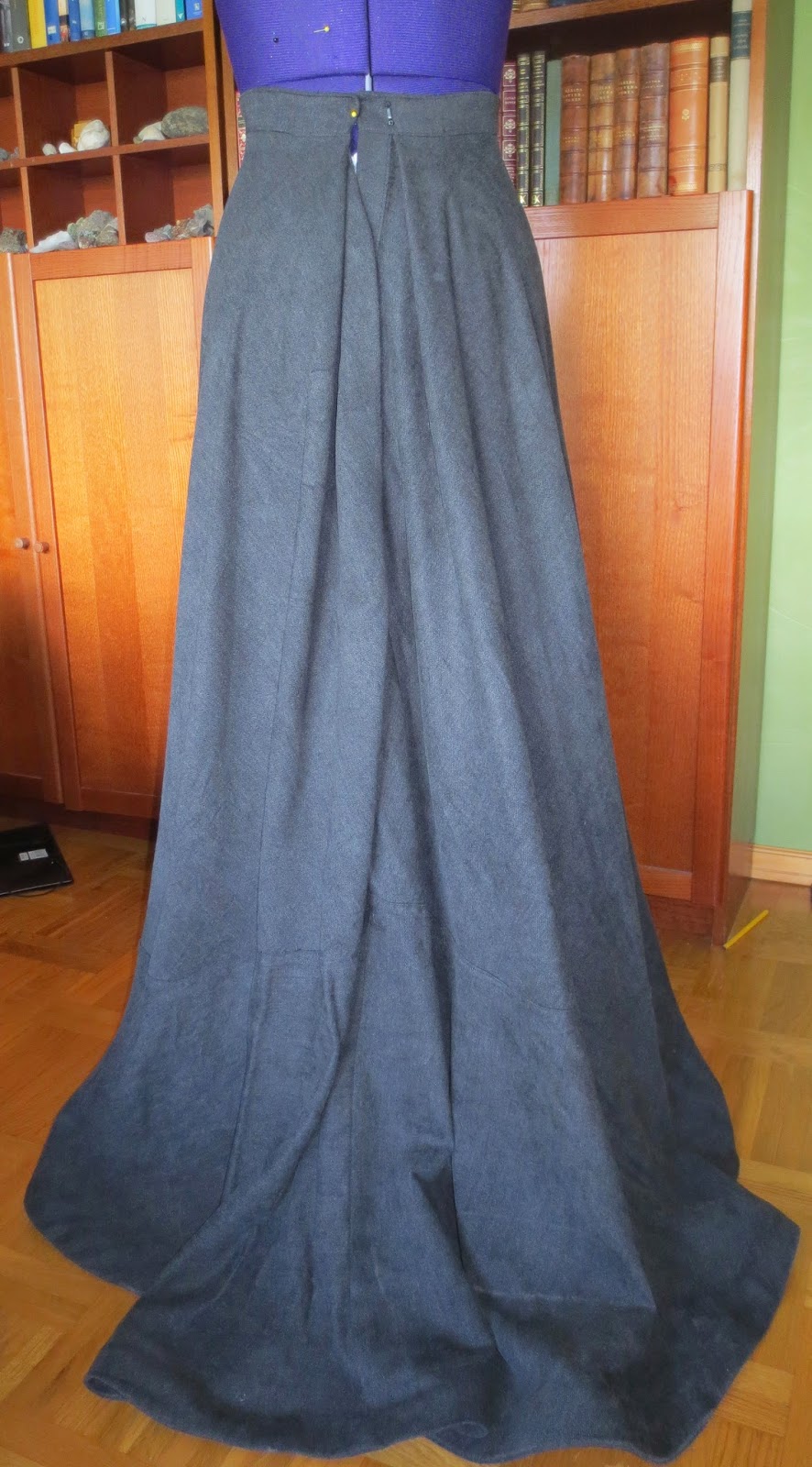Once you make a petticoat you better make something to wear with it. I have for long been planning to make a circular skirt with a flounce to my Edwardian ensemble, but of course no did not start on it until the day before the event where I wanted to wear it. Again I turned to
the patternmaking book form 1908 to draft the pattern and followed the measurements given to make it as easy as possible. The only change I made from the basic pattern was to add about 10 cm at the center back to make a pleat there.
 |
| Pattern diagram |
The fabric was from my stash, a grey cotton fabric that looks like a mixture between wool and velvet. Kind of weird, but nice. To keep the pieces from stretching I used my machine and sewed a seam around them all. The fabric does not seem to fray to any great extent so when I sewed the center front and back seams I left the seam allowances raw and pressed them open. Different views of the finished skirt can be seen below. The pattern made for a pretty long skirt so it has a bit of a train. Not very practical, but oh so fabulous.
Before attaching the flounce to the upper part of the skirt I made the placket and the belt. There is quite a lot of fabric in the flounce so it was easier to not have that being in the way. For the placket I once again used the instructions from
Cloak & Corset, but this time made the placket in two separate parts. Since the opening is concealed in the pleat I only used one hook and eye and one button halfway down. To strengthen both the placket and the belt they were faced with fusible interfacing. In order to fit the skirt to the waistband two darts were needed in the front.
 |
| Skirt placket at center back |
 |
| Placket concealed in pleat |
The flounce was sewn on wrong sides together with the skirt. One of the seam allowances were then folded over and stitched down, making a flat felled seam. The join is barely visible as it is but I might add some kind of decoration in the future that covers it.
 |
| Seam joining flounce and skirt |
 |
| Example of skirt decoration, from here |
The hemline is faced with horeshair braid (nylon) to help it keep its shape. Since the bottom edge is very curved I did not simply fold it up, but attached a strip of fabric cut on bias and turned it to the wrong side of the skirt. It was then secured on the inside using the machine to make a blind hem. I would have made it by hand but my body does not care for so much hand sewing.
Finally, a picture of the skirt being worn:









Beautifully done!
ReplyDeleteJust lovely :) Hoppas allt är väl i den goa sommarvärmen! Vilket bra tips att hitta gamla mönster!
ReplyDeleteKram Monika Strandlycke